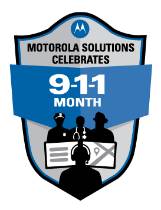Recently, the U.S. Department of Homeland Security’s SAFECOM and the National Council of Statewide Interoperability Coordinators (NCSWIC) issued three white papers on land-mobile radio (LMR) technologies. Known as the “LMR Trio,” they remind public safety decision makers that even as new and emerging communications technologies are being developed, their agencies must continue to invest in their LMR networks. “Without continued investment to operate and maintain LMR systems, emergency communications could be compromised.”
The first of these papers, “Land Mobile Radio 101”, gives four key reasons why agencies need to continue to support and develop their radio networks:
Reliability: Today, land-mobile radio provides “the most reliable means of voice communications for public safety.” In an emergency, lives depend on effective communications. The radio must work, and our LMR systems are designed, built and tested with this in mind.
Mission-critical features: LMR benefits from decades of use in the most challenging conditions. The paper lists features such as rapid call setup, group calling, high-quality audio and ruthless preemption that were built specifically for the real-world needs of public safety personnel. Others to consider are site resiliency, low latency, long battery life and device-to-device connectivity. All of these are critical capabilities that LMR offers today.
Battle readiness: “LMR technologies and features have been integrated into response protocols and training curriculum, and tested through planned exercises and real-world events.” In an emergency, personnel need to focus on the mission, not their technology. Solid, reliable and familiar radio networks minimize surprises and distractions when agencies can least afford them.
Existing footprint: Over the years, federal, state and local agencies have invested billions of dollars in LMR infrastructure and devices. These systems are in place and working.
For the foreseeable future in the United States, both LTE and LMR networks will be indispensable to public safety. LMR has unparalleled reach and reliability for delivering voice and low-bandwidth (but critical) data like the location of an officer or whether a car has been reported stolen. LTE is necessary to deliver rich information like photos and video, and to collect large quantities of data from the field.
At Motorola Solutions, we continue to work on making sure LTE fits the needs of public safety. Our LTE systems, delivered in partnership with Ericsson, the global leader in LTE deployments, give public-safety users the broadband capabilities of LTE, combined with the control and security of a private network. Robust features such as Priority Management give agencies granular control over limited bandwidth and ensure critical information reaches those who need it the most.
We are also investing in technology that will allow LMR and LTE to complement each other, working together to provide public safety personnel with total situational awareness. Our WAVE software extends push-to-talk capabilities to broadband devices, while Intelligent Middleware makes it easier to create software that bridges both technologies. Devices like the LEX L10 and the APX 8000 radio can also collaborate and complement each other in the field.
We will continue to work on broadband technologies and build the next generation of mission-critical voice systems. Until then, LMR provides the critical combination of quality, reliability, and assurance of access to priority communications that public safety officials need when responding to emergencies.”
The LMR Trio is a set of white papers intended to educate public safety decision makers and funders on the importance of LMR technologies, and the need to sustain and support LMR systems. They include:
LMR 101: Educating Decision-Makers on LMR Technologies
LMR for Decision Makers: Educating Decision-Makers on LMR Technology Issues
LMR for Project Managers: A P25 Primer for Project Managers and Acquisition Managers




